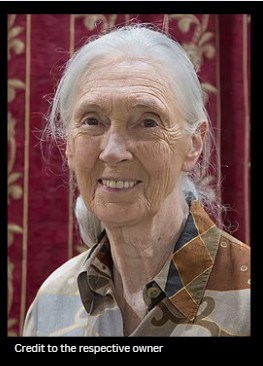Jane Goodall — The Day She Walked Into an American Classroom With a Chimpanzee Story
Jane Goodall once stood in an American high school gym and shared the story of a chimpanzee named David Greybeard with a room full of restless teenagers—and by the time she finished, many of the kids were moved to tears. With no slides or lab coat, just her voice, she told how David, once terrified of her, reached out to touch her hand in the wild—a moment that showed animals were not just “things,” but beings with minds and feelings.
That small, quiet, intimate story shook American science to its core. When Goodall began her work, most researchers dismissed it. Scientists mocked her for naming chimps instead of numbering them, for saying they had personalities, and for daring to blur the sacred line between humans and animals. But in the U.S., her voice broke through. When National Geographic featured her, when she appeared on Johnny Carson’s couch, and when she toured American universities, she didn’t merely share science—she changed culture.
Young people flocked to her talks. Letters poured in. Teachers rewrote biology lessons. Kids begged their parents to stop buying products tested on animals. In the 1970s and ’80s, as America grappled with conservation issues, Goodall gave the movement a human face—a woman with long hair and a notebook, kneeling in the jungle, insisting that empathy was part of science.
She never stopped. In 1991, after speaking to American students who felt hopeless about the planet’s future, she founded Roots & Shoots, a youth-led conservation movement that spread across all 50 states. Today, millions of American children plant trees, clean rivers, and advocate for animals because Jane told them about the day David Greybeard reached for her hand.
Jane Goodall’s story in America isn’t about fame. It’s about how one quiet scientist made science deeply emotional—and left a generation unable to see animals, or themselves, the same way again.
